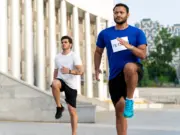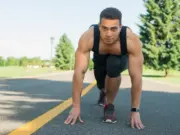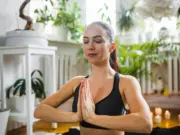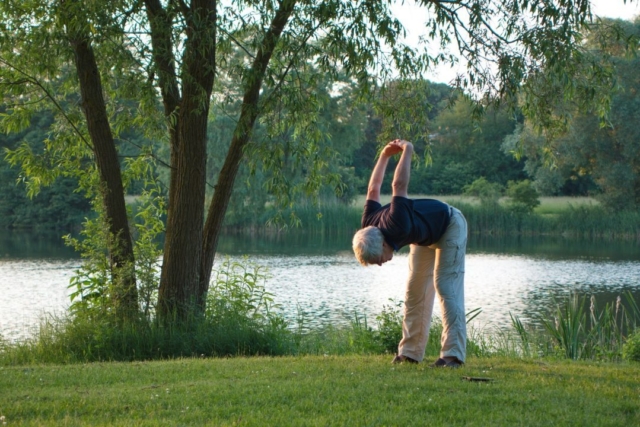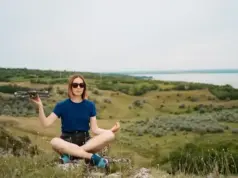Etymologically, “Dwi” means two and “Kona” means angle. It is named so because in this asana, we form two right angles. Also known as the Double Angle Pose, Dwikonasana awakens the Anahata or the Heart Chakra. It is an effective Chest Opening Pose that loosens the chest muscles and nerves. Dwikonasana essentially triggers the Anahata Chakra which is the center for the spiritually emotive feelings of love, compassion, connection and understanding. It serves as the bridge point between the individualized consciousness with the universal consciousness.
This asana can be performed by all age groups and is an excellent pose for young people.
How Do I Perform Dwikonasana?
- Stand straight with your feet one meter apart and hands beside the body with palms resting on the outer thighs.
- Place your hands behind your back, interlock your fingers and inhale deeply
- Without straining, twist your arms, so that the palms face outwards away from the body (your fingers should remain interlocked)
- Stretch your spine and slowly bend forward from the waist while simultaneously bringing your arms upwards behind your back. Exhale slowly.
- Raise your arms as high as possible, inhale deeply and maintain this position for 30-50 seconds
- Slowly release the pose as your exhale and relax completely
- Repeat these steps 3-5 times
Benefits of Performing Dwikonasana
Therapeutically, Dwikonasana strengthens the lower back muscles and the other major muscle groups surrounding the shoulder blades, including the Rhomboids, Teres muscle and the Trapezius muscles. It provides a good stretch to the chest. It also tones and develops the nerves and muscles of the spine in the region of the neck. Dwikonasana relieves any stiffness or aches from the back and the neck. It is also known to improve digestion. On a cognitive level, this asana also helps you release stress and anxiety.
When Should You Avoid Dwikonasana?
If you suffer from severe back pain or have a spinal injury, do not practice this asana. As Dwikonasana focuses on your shoulders, do not try it if you have any injuries in your shoulder and/or fingers. If you have recently undergone a surgery in the abdominal area or the shoulder area, avoid practicing this asana.
Remember that you only need to stretch and bend within your limits. Avoid straining any part of your body. If you feel discomfort or strain, immediately release the asana and start over. As a precautionary measure, contact your physician or doctor before performing this asana.
Was this information useful to you? Would you want us to write about another asana? Let us know your thoughts in the comments below.

















